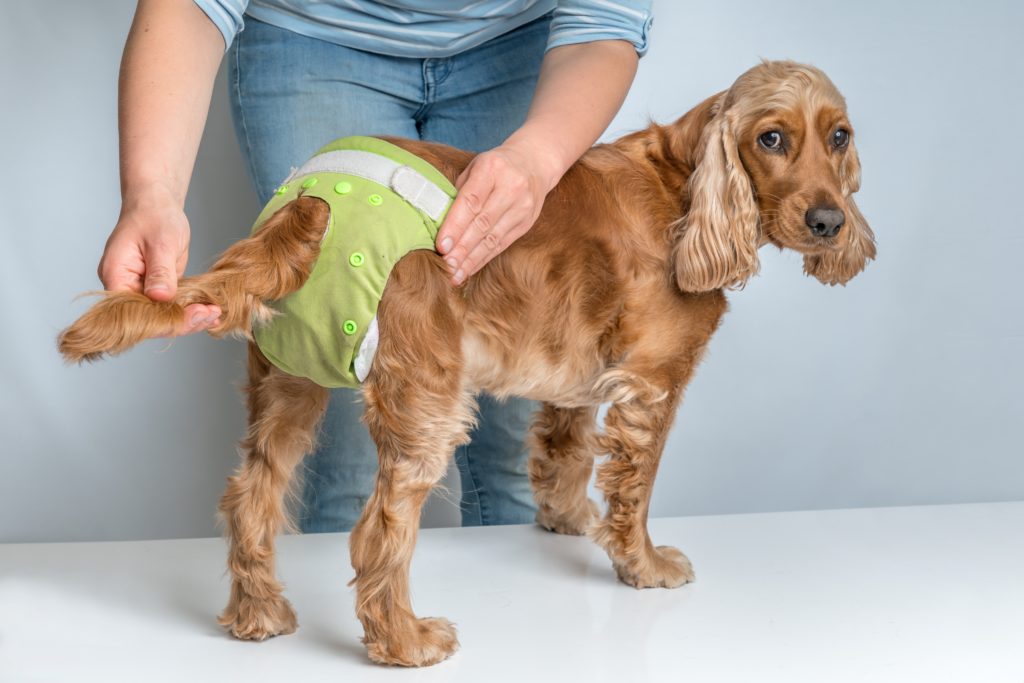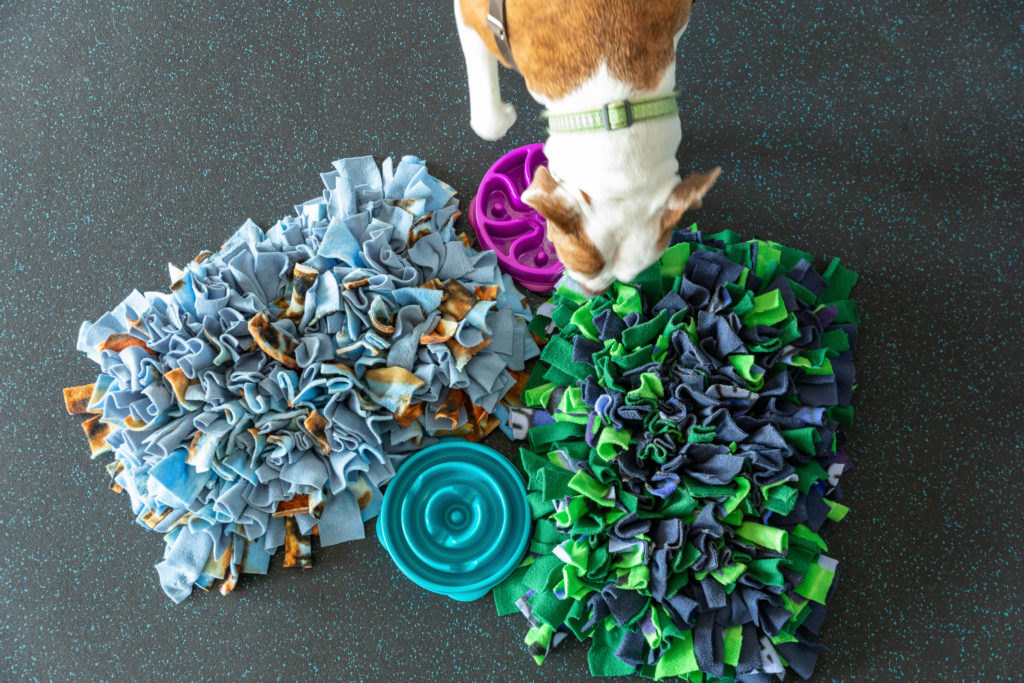What to Expect On Your Dog’s First Season – All You Need to Know
By admin / May 9, 2022 / No Comments / Pet Dogs
Your dog’s first season can be a bewildering time. You’re not really sure what to expect, and you don’t want your pup to feel uncomfortable or in pain.
You’re certainly not alone!
Every year, millions of pups blossom into little ladies and experience their first season, and for many confused owners, this can be a challenging and somewhat scary time.
Luckily, we’re here to help!
In this post, we’ll tell you everything you need to know about what to expect, including the signs to look out for and how you can help your pup feel relaxed and safe during her first season.
What Is A “Season”?
A Season, estrus or sometimes described as a heat – is the period of time in which your pup is developing her ability to reproduce. Now, whether you’re planning on responsibly breeding her or not, the first cycle is usually one that you let happen (though more breed specific spay info can be found here). So it’s always best to be prepared.

Signs Your Dog is Going Through a Season Cycle
The most common sign that your dog is in heat is a change in her vulva. The vulva will swell and may appear redder than normal, and you may also see a bloody or brown discharge.
Dogs typically lick their genital area more frequently during this time.
Other signs of Estrus can include:
- Clinginess (including whining)
- Aggression toward male dogs
- Restlessness or anxiety
- Holding her tail closer to her body
- Peeing more frequently
- Mounting or humping other dogs or objects
If you spot any of these signs, it’s important to keep a watchful eye on your pup.
Also, during this time, your dog may be more likely to run away from home if she gets the chance, so be sure to keep her in a safe, secure area.
The Four Stages of Your Dog’s Heat or Season Cycle
Much like the human menstrual cycle, there are four stages your pup will go through on her first cycle:
Pro-oestrus
The season cycle begins when your dog’s body is preparing for mating. Signs seen during this period include a swollen vulva, bloody or brown discharge, excessive licking of the genital area, clingy behaviour towards her people, and sometimes defensiveness toward male dogs.

Oestrus (The important one!)
This is the main stage of the estrus cycle when your dog is most likely to get pregnant. This is typically when your dog will be very attracted to male dogs and will be keen to mate with them frequently.
Post-oestrus
The final phase of the estrus cycle is when progesterone levels begin to fall. Throughout this stage, your dog will mostly return to her normal behaviour. However, some dogs could experience a “false season” in which they begin to show signs of oestrus again. It can also be when Phantom pregnancy can occur.
Anoestrus
This is the period following the estrus cycle and before proestrus starts again. At this point, your dog’s reproductive system is effectively in a resting state.
How Long Will My Dog Stay In Season?
The length of your dog’s season cycle will vary depending on several factors, including their breed and size. Generally, it’ll be about 2-4 weeks long.
Bleeding can be heavier in some dogs than others, but it only tends to last for 7-10 days of your pup’s cycle.
How Often Will My Dog Have a Season?
The number of times that a dog will go into estrus can vary depending on several factors, including their breed and size. Generally, small-breed dogs might go through this cycle up to 3 or 4 times per year, while larger breeds may only experience it once every 12-18 months.
How Do You Help Your Dog Feel More Comfortable When She’s in Season?
There are a few things that you can do to make your dog feel at ease and comfortable during her first season:

Keep Your Dog Entertained and Distracted
Play games or teach her new tricks to take her mind off of any discomfort she may be feeling. Enrichment is a really great thing to explore during this time.
Spend More Time With Your Dog
Give her plenty of extra attention and affection during this time. She’ll appreciate it.
Create a Calm Environment
You can provide a quiet, peaceful space for your dog to relax. You can also use dog-calming pheromones or feed her calming treats.
Keep Her Hydrated
Make sure she has access to plenty of fresh water at all times, hydration can be an issue at times like this due to the fact that the estrogen and progesterone levels are low your dogs body will retain more water, which in humansmakes you feel bloated and experience cramps – hydration helps.
Manage The Bleeding
To manage the bleeding, especially if it’s heavy, you could use a female dog diaper to keep your pup clean and dry. You can also use an old pair of boxers or similar and line them with a panty liner.
It could also be a good idea, at this time, to put easily washable blankets or towels over furniture/dog beds to manage accidents ahead of time.
Ultimately, the key to helping your dog feel more at ease during her first heat cycle is to be patient and understanding.
Your pup may experience some mood swings or out-of-character behaviour, but just remember that this is a normal part of her hormonal development.
If you can be there for her, offer love and support, and help keep her as comfortable and happy as possible, your dog will get through this season just fine!
Things to Consider When Your Dog is in Season
Your little lady has suddenly gone from an innocent pup to the hottest babe on the block, literally overnight. Every male dog in the neighbourhood, and the next, wants to meet her, and they’re not bringing flowers or a box of chocolates.
So with this in mind, here are a few ways to keep her safe:
1 – Be Hyper-Vigilant
If your dog goes outside into your garden, keep a sharp eye on her. Male dogs have an uncanny knack for getting into the most secure of gardens when a female dog is in season.
2 – Keep Your Dog on a Lead
This will stop your pup from running off, and it will help you keep control of the situation should a male dog become too interested in her.
3 – Consider A Secure Field or Sniffspot
Using things like secure fields and sniffspots in lieu of your normal walk can give you both room to breathe. Because of the nature of these locations, you can go, find an open space to enjoy and relax in, without the fear of a wandering male…

4 – Keep Your Windows Closed and Locked
The smell of a female in season can waft out through your open windows, and any male dogs in a 3-mile radius will be able to smell her. You don’t want any hairy uninvited guests turning up!
5 – Keep Any Male Dogs Separated
If you have a male dog, it’s best to keep him away from your pup while she’s in season. This can be easier said than done, but it’s important to avoid any stressful situations for your dog.
For fairness sakes, if you can? Get your boy out of the house, he’ll be happier and far less stressed.
Walk at quieter times
A female dog’s pee is loaded with pheromones and hormones, which act as a homing beacon for any amorous males in the area. So it makes sense to change the times you go for walks. This will help to avoid any confrontations with other dogs who may be out looking for a lady in season.
What Should You Expect After Your Dog’s First Season?
After your dog’s first season has ended, she will likely be back to her usual self within a few weeks. However, it’s essential to keep an eye on her during this time and make sure that she is recovering well and not showing any unexpected changes or signs of discomfort.
Remember, We Breed Responsibly
There are enough dogs in this world without homes and without their health or burdened with severe behavioural issues due to flippant and irresponsible breeding. It’s a large part of why I have a job.
So, if you’re looking at this with that in mind, ensure that you read Are You Considering Breeding Your Female Puppy? Here are 36 Important Questions, Considerations and Need To Knows before you commit to it.
Anyway!
Now that you know what to expect during your dog’s first season, it is important to be prepared and take the necessary precautions to keep her safe and comfortable.
Make sure to keep an eye on her moods and behaviour. If you have any concerns, don’t hesitate to speak to your veterinarian.
As long as you are patient, understanding, and attentive, your dog will get through her first season just fine!
If you want more information on Spaying and about breeding, check out The Rebarkable Spay & Neuter Information Center! which contains all of our posts about this phase of your dogs life.
Author, Ali Smith
Ali Smith is the Positive Puppy Expert, dog trainer and is the founder of Rebarkable. She is passionate about helping puppy parents get things right, right from the start. To help create a puppy capable of being a confident and adaptable family member and keep puppies out of shelters.
Ali has won multiple awards for her dog training, and has had her blog (this blog!) rated as 2021 & 2022 worlds’ best pet blog!
Link to originalRebarkable
